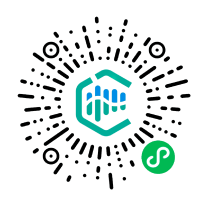

-
{{ listItem.name }}快速筛选药品,用摩熵药筛
 微信扫一扫-立即使用
微信扫一扫-立即使用
【ChiCTR-TRC-10000902】A randomized controlled trial comparing the treatment effects of patching versus acupuncture plus patching on amblyopia in patients of 7 to <13 years old
ChiCTR-TRC-10000902
结束
/
/
/
2010-05-13
/
/
Amblyopia
A randomized controlled trial comparing the treatment effects of patching versus acupuncture plus patching on amblyopia in patients of 7 to <13 years old
A randomized controlled trial comparing the treatment effects of patching versus acupuncture plus patching on amblyopia in patients of 7 to <13 years old
To assess the effects of patching versus acupuncture plus patching on amblyopia in patients of 7 to <13 years old
随机平行对照
Ⅰ期
Random, active control, parallel groups
Single-blind
Yan Ai Eye Foundation, DOVS, Hong Kong, China.
/
50;150
/
2010-05-15
2013-05-31
/
1. Age: 7 to <13; 2. Amblyopia associated with strabismus (concomitant or inconcomitant), anisometropia, or both a. Criteria for strabismus: At least one of the following criteria must be met: (1) Heterotropia at distance and/or near fixation on examination (with or without spectacles); (2) History of strabismus surgery (or botulinum); (3) Documented history of strabismus which is no longer present (which in the judgment of the investigator could have caused amblyopia). b. Criteria for anisometropia: At least one of the following criteria must be met: (1) >0.50 D difference between eyes in spherical equivalent; (2) >1.50 D difference between eyes in astigmatism in any meridian; c. Criteria for combined mechanism amblyopia: Both of the following criteria must be met: (1) Criteria for strabismus are met (see above); (2) >1.00 D difference between eyes in spherical equivalent OR >1.50 D difference between eyes in astigmatism in any meridian. Note: the spherical equivalent requirement differs from that in the definition for refractive/anisometropic amblyopia. 3. Visual acuity, measured in each eye without cycloplegia within 7 days prior to randomization using the E-ETDRS protocol on Electronic Visual Acuity Tester, as follows: (1) Visual acuity in the amblyopic eye between 19 to 71 letters inclusive (20/40 to 20/400 inclusive); (2) Visual acuity in the sound eye >=79 letters (20/25 or better); (3) Interocular acuity difference >=10 letters (i.e., amblyopic eye acuity at least 2 lines worse than sound eye acuity). 4. No amblyopia treatment (other than spectacles) in the last 6 months (any treatment more than 6 months prior to enrollment is acceptable); 5. No current vision therapy or orthoptics; 6. Ocular examination within 6 months prior to enrollment showing no ocular cause for reduced visual acuity; 7. Cycloplegic refraction within 6 months prior to enrollment; 8. Myopia no more than -6.0 D spherical equivalent in either eye; 9. Spectacle correction for measurement of enrollment visual acuity must meet the following criteria and be based on a cycloplegic refraction that is no more than 6 months old (refractive error must be corrected with spectacles and not contact lenses): a. Requirements for spectacle correction: (1) For patients meeting criteria for strabismus (see 2.a above); (2) Hypermetropia if corrected must not be undercorrected by more than +1.50 D spherical equivalent, and the reduction in plus sphere must be symmetric in the two eyes. Otherwise, spectacle correction is at investigator discretion; (3) For patients meeting criteria for anisometropia or combined-mechanism (see #2. b, c above); (4) Spherical equivalent must be within 0.50 D of fully correcting the anisometropia; (5) Hypermetropia must not be undercorrected by more than +1.50 D spherical equivalent, and reduction in plus must be symmetric in the two eyes; (6) Cylinder power in both eyes must be within 0.50 D of fully correcting the astigmatism; (7) Cylinder axis in the spectacle lenses in both eyes must be within 6 degrees of the axis of the cycloplegic refraction when cylinder power is > 1.00 D. b. Spectacles meeting above criteria must be worn either: (1) for at least 16 weeks immediately prior to enrollment; or (2) until visual acuity in amblyopic eye is stable (defined as two consecutive visual acuity measurements by the same testing method at least 4 weeks apart with no improvement of one logMAR line or more); (3) An acuity measurement done any of the following ways may be considered the first of two consecutive measurements: 1) in current glasses; 2) in trial frames with full correction of hypermetropia with cycloplegia; or 3) by having the patient return in new glasses for first measurement. The second acuity measure does not have to be made through the same prescription as the first, if the second measure is made through a more accurate prescription. Note: since this determination is a pre-study procedure, the method of measuring visual acuity is not mandated although E-ETDRS testing is preferred if done as part of usual care. 10. No prior intraocular or refractive surgery; 11. No known reaction to or development of systemic side effects (e.g., confused mental state, somnolence, skin flushing, exacerbation of asthma) with prior use of cycloplegics and no known skin allergy to patch or bandage adhesives; 12. Parent willing to accept randomized treatment, available for at least 6 months of follow-up, and willing to be contacted by DOVS staff; 13. Informed parental consent.;
登录查看1. Patients with ocular diseases other than refractive error, strabismus (including microtropia) and amblyopia; 2. Systemic diseases that require chronic or regular intermittent medication (e.g. Down Syndrome, asthma, allergy, epilepsy and so on); 3. Allergy to cycloplegics; 4. Inability to attend follow-up assessment; 5. Inability to tolerate and cooperate with acupuncture procedure; 6. Myopia more than -6.0D SE in the amblyopic eye.;
登录查看Hong Kong Eye Hospital
/
Hong Kong Eye Hospital的其他临床试验
- 重複膠原交聯治療錐形角膜
- 一項旨在評估額外降低眼壓對具有篩板變形的青光眼治療有效性的隨機對照試驗
- 比較淚囊鼻腔造口術作為初期或早期治療急性淚囊炎之效果
- A randomized controlled trial comparing the treatment effects of patching versus acupuncture plus patching on amblyopia in patients of 7 to <13 years old
- Evaluation of Selective Laser Trabeculoplasty for Intraocular Pressure Lowering in Chinese Eyes - A pilot study
3/F Hong Kong Eye Hospital, 147K Argyle Street, Kowloon, Hong Kong的其他临床试验
最新临床资讯
-
Nature Medicine丨早期三阴性乳腺癌围手术期atezolizumab单抗治疗:随机3期IMpassion031试验
PDL1 三阴性乳腺癌 atezolizumab
BioArtMED2025-06-21
-
石药集团JMT101联合疗法II期临床研究结果在2025年ASCO大会上进行口头报告
-
糖尿病 GLP-1/GIP
恒瑞医药2025-06-21
-
肥胖 Wegovy
一度医药2025-06-21
-
ADA 糖尿病
箕星药业科技2025-06-21
-
乙肝 乙肝疫苗
肝脏时间2025-06-21
-
药物临床试验
Insight数据库2025-06-21
-
B细胞恶性肿瘤 自身免疫性疾病 Capstan
博生吉细胞研究2025-06-21
-
结节性硬化症 三叉神经痛 BD项目
美柏资本2025-06-21
-
正大天晴药业集团2025-06-21































 浙公网安备33011002015279
浙公网安备33011002015279
 本网站未发布麻醉药品、精神药品、医疗用毒性药品、放射性药品、戒毒药品和医疗机构制剂的产品信息
本网站未发布麻醉药品、精神药品、医疗用毒性药品、放射性药品、戒毒药品和医疗机构制剂的产品信息